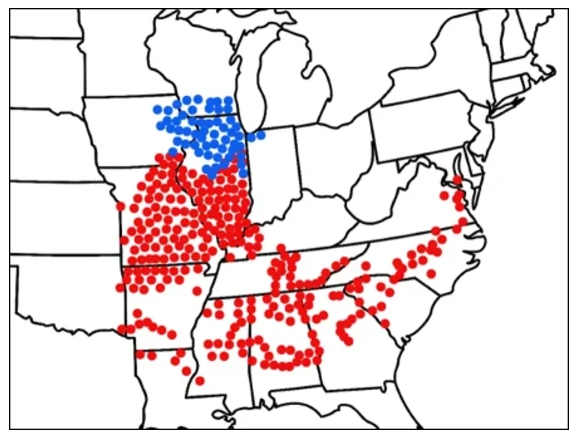Should Illinois be worried about the looming cicada emergence?
Illinois is poised to be the cicada capital of the United States this spring, when millions of the large, loud insects will emerge from the ground to sing their courting song in a rare event. With such a massive appearance looming, should people be worried?
More: Why Illinois will be the cicada capital of the United States in 2024
Annual cicadas emerge every midsummer in Illinois, but this year will feature a once-in-a-lifetime event when two specific broods of periodical cicadas will start appearing together — as early as May. Periodical cicadas emerge in 17- and 13-year cycles, and these two groups — Brood XIII and Brood XIX — appear at the same time only once every 221 years. And they only occur adjacently in one area: a handful of counties in east-central Illinois.
Given that rare confluence — unseen seen 1803 — is there cause for concern? For the most part, no.

Are cicadas harmful?
Periodical cicadas don’t pose a threat to humans — or pets, although their egg-laying may put newly planted trees or shrubs at risk. But periodical cicadas will not kill healthy, mature trees.
Do cicadas bite?
Cicadas don't bite and they don't sting, said Kacie Athey, a specialty crops entomologist with the University of Illinois Extension.
What do cicadas eat?
Adult periodical cicadas do feed on plants, contrary to popular belief. But they spend most of their time above ground reproducing.
What eats cicadas?
When periodical cicadas emerge, they’re consumed by just about any creature that eats insects. The National Wildlife Federation notes that humans who have sampled cicadas often say they taste like canned asparagus. Other reports say they taste like almonds or seafood. Many cicada recipes can be found online.
Athey said she hasn't personally eaten cicadas ... yet. But she added, "I have it on good authority that the ones covered in mulberry sauce are delicious. A dessert cicada, if you will."
Are cicadas dangerous? Here's what's fact and fiction with cicada bites, stings and more.
Where do all the cicadas come from?
Female periodical cicadas usually lay eggs in small branches. When the eggs hatch, the nymphs burrow into the ground, where they feed — for years — on juices from roots. They then emerge and molt, and the males begin their brief, noisy courtship song. After about a month, the adult cicadas begin to die.
Where will they be?
The U of I Extension says older housing developments tend to have large numbers of periodical cicadas, as those neighborhoods often are home to established trees whose roots provide food for the nymphs. Newer developments where trees were removed before home construction or that were originally farm fields will have fewer cicadas.
What can we expect when cicadas come to Illinois?

Brood XIII, on a 17-year cycle, has a reputation for its population density. In 1990, there were reports of people in Chicago using snow shovels to clear sidewalks of dead cicadas, which have a noticeable odor. The same year, the Journal Star reported, "So many crushed cicadas cover some portions of driveways along Grandview that a paste seems to spread over the ground."
When will these broods appear together again?
Whether you experience the periodical cicadas as a natural phenomenon, an entree or a snack, Athey encouraged people to appreciate what they have in the insects and in the rare occurrence of 2024. After this year, Brood XIII and Brood XIX cicadas won’t sync up their emergences again until the year 2245.
This article originally appeared on Journal Star: Cicadas due to emerge in the millions. Should people of Illinois worry?
